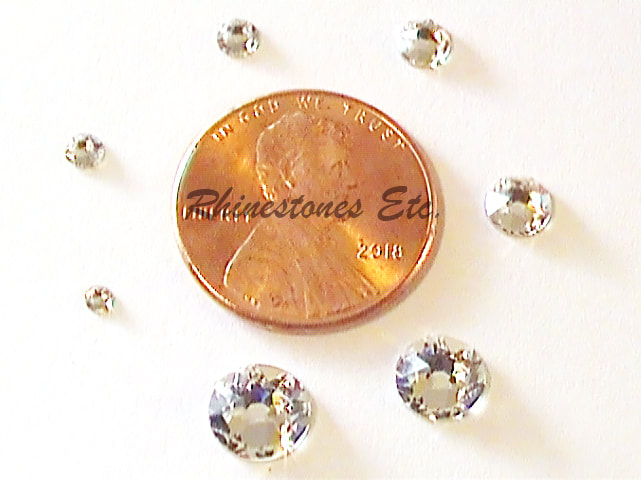|
Are you new to creating blinged out projects? If so, you may have noticed that rhinestones have a unique unit of measurement. You may have seen sizes listed as 6ss, 12ss, 20ss, or 30ss. While you are familiar with inches and millimeters, “ss” is an unfamiliar unit of measurement. Since you don’t understand this term, you have no idea whether the rhinestone is large or small. Is there a way to translate rhinestone sizes into something recognizable? The History of Rhinestone Sizes To understand the term “ss”, we must go back in history to when rhinestones were a natural resource. Originally, gem hunters collected a unique type of quartz found only along the banks of the Rhine River. During formation, lead mixed with silicon and oxygen to give this type of quartz glittering properties. Finders of these sparkling stones grouped them by dropping them into different size holes. These gem hunters assigned a number to each hole with smaller stones having smaller numbers. So, whichever hole number the quartz fit into became the stone size. Later, stone size became abbreviated to “ss” As years passed, this natural resource became depleted and manufacturers developed processes to replicate this glittering quartz. Today, rhinestone manufacturers continue to use stone size as the unit of measurement to describe rhinestone sizes Choosing the Perfect Rhinestone Size Typically, most rhinestone retailers offer a rhinestone size chart with the accompanying millimeter length. This enables you to check the stone size against a ruler. Generally, the larger the number, the bigger the rhinestone. So, a 6ss embellishment will be much smaller than a 34ss one. Sometimes, your bling project can help guide you in choosing a size. For example, you’ll probably choose a smaller rhinestone when gluing rhinestones on fingernails. Some manufacturers offer tiny rhinestone sizes like 5ss, perfect for adding a bit of sparkle. On the other hand, you may want to use a large size for a dance costume. Generally, popular sizes include 16ss, 20ss, and 30ss. Yet, choosing a rhinestone is a personal preference and there are no wrong choices. Furthermore, you don’t have to stick with only one size. Scatter patterns are a trendy and stylish way to use rhinestones on clothing, especially for skating and dance costumes. Additionally, if your design has curves or lettering, you may find using several sizes work better. Rhinestone Size and Sparkle Will a bigger rhinestone sparkle more than a smaller one? Generally, the material, the number of facets, and their arrangement affect sparkle the most. Typically, rhinestones made from crystal sparkle more than both acrylic and glass rhinestones. Additionally, manufacturers cut facets at different angles. This determines how light penetrates and exits the rhinestone to create scintillation and sparkle. Of course, larger rhinestones will also have larger facets to reflect light to the viewer. Usually, higher quality rhinestone manufacturers use crystal. Generally, crystal is a form of glass with an additional ingredient. In the past, manufacturers used lead oxide. With health concerns, today many rhinestone companies use barium, zinc, or potassium oxide instead. Crystal is stronger and denser than glass allowing greater precision in facet cutting. Buying High Quality Crystal Rhinestones Today, crafters bling out many types of objects including clothing, shoes, sunglasses, purses, and tumblers. By adding rhinestones, you create visual interest with texture, sparkle, and color. Once you understand the unit of measurement, it’s easier to choose the perfect size for your project. When shopping for high quality crystal rhinestones, trust Rhinestones Etc. Since 2011. We offer competitive pricing, fast processing times, and great customer service. Browse our online store to find the right color and size rhinestones for your bling project.
0 Comments
Your comment will be posted after it is approved.
Leave a Reply. |
KarenI have been adding bling for over 20 years. Through my projects, I hope you find inspiration. Categories
All
Archives
July 2024
|
Home About Policies Return Shipping
Contact Us Size Chart Privacy Products Reviews
Copyright 2024 Rhinestones Etc. All rights reserved.
Contact Us Size Chart Privacy Products Reviews
Copyright 2024 Rhinestones Etc. All rights reserved.



 RSS Feed
RSS Feed